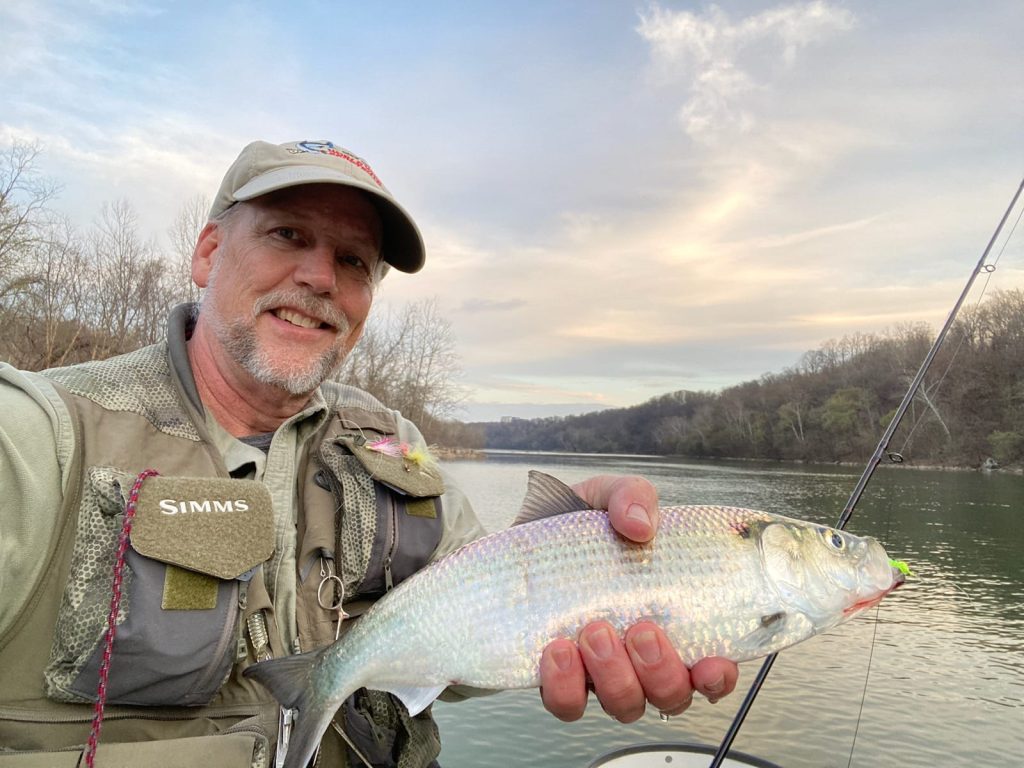March 23, 2023: It was late Wednesday afternoon when I decided to load my kayak and drive down to Fletcher’s Cove on the lower Potomac River in Washington, DC. I had been waiting for the water temperature to reach 50 degrees. I took the GW Parkway to follow the traffic pattern on Canal Road. I arrived at Fletchers at 4:30 PM. The tide was low and rising, and the clarity of the water looked perfect. I launched my kayak and peddled downstream toward Walker’s Point. A strong wind blew upstream, and I had to retrieve my hat from the river along the way. There was only one boat anchored just out from the launch, and he was catching fish on his spin rod as I passed him. He looked happy! I started fishing as I drifted past Walker’s Point and I hooked and landed a fish on my first cast. The action was consistent. I caught fish while trolling, but most while swinging the fly. The wind continued until the last hour of daylight, and then the river went calm. The wind was not a problem, maybe a benefit, as it kept me from moving downstream. I never anchored. By adjusting my rudder in the current, the wind kept me in good position for casting. The shad were almost all hard-fighting hickories, with several big females 16-18 inches. Although few fishing boats were on the water, the river was busy with Georgetown crew teams practicing their sport. The cove was surrounded by the sounds of vehicles battling traffic as commuters headed homeward.

A lone shore angler successfully caught fish while casting shad darts from Walker’s Point. A fly angler with chest waders appeared later, worked his way below the point, and tried wading out to reach the seam. He was in a precarious position with the rising water! I didn’t see him hook a fish. Surprisingly, when hooked, the shad were not jumping; I only occasionally hooked a leaper as most went deep, especially when near the boat. My fly rod really got a workout, bending all the way to the cork at times. I used a 7wt rod with a 250-grain sinking line and a 20 lb Maxima tippet. My fly was a 1/16 oz chartreuse jig head with a green estaz body and a white marabou tail. After I landed 20 fish, I wanted to experiment with my 8wt rigged with an intermediate sinking line. I never got a hit — clearly, the fly wasn’t getting deep enough. I then started casting my 10wt rod with a huge streamer that my brother made for me to catch big stripers. After about 20 minutes with no action, I couldn’t resist the shad bite, so I returned to my 7wt. The fishing really picked up after the sunset, with almost a fish every cast. I landed only three white shad (Americans), which didn’t happen until the last 30 minutes on the water. The biggest fish of the evening was an American that shook the hook while I was getting my camera. I ended the evening when I landed my 40th fish. Checking the USGS water data website, I noted the water temperature reached 51 degrees that afternoon.
The river will be filled with anglers in April, especially on the weekends. The evening shad bite may be the time to target as crowds diminish and the low light triggers the action.
By Dan Neuland
You must be logged in to post a comment.